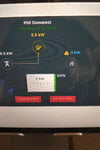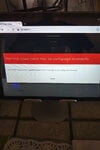I have 3 Powerwall 2s with a Gateway 2 that have been running for about 2 weeks. This is a third party install as I already had solar. Today I tried the "Go Off-Grid" button on the app, which only became functional for me a couple of days ago. The batteries were at 51%, but going off grid immediately shut down my solar inverter with an "AC Frequency Too High" error. I checked the frequency at an outlet with a multimeter and it was floating around 62 Hz.
I called Tesla and was told this was expected behavior and that the batteries will only attempt to charge from solar once they go below 40%. This was the first I'd heard of anything like this. Can anyone confirm whether this is really the case?
Note that I did email Tesla ([email protected]) last night to request a reduction in off-grid frequency when the batteries are near full. I tried going off grid a couple of nights ago when I first got the "Go Off-Grid" button in the app. The batteries were then near 100% (storm watch), and my UPSs and a some lights went nuts. It was night, so I didn't expect anything from solar. I don't know if they adjusted something at my request and introduced a new problem.
I any event, I'm hoping to understand if the behavior I'm seeing is normal or if I should bug Tesla some more. I did email support again, describing the situation and asking for some guidance/help.
I called Tesla and was told this was expected behavior and that the batteries will only attempt to charge from solar once they go below 40%. This was the first I'd heard of anything like this. Can anyone confirm whether this is really the case?
Note that I did email Tesla ([email protected]) last night to request a reduction in off-grid frequency when the batteries are near full. I tried going off grid a couple of nights ago when I first got the "Go Off-Grid" button in the app. The batteries were then near 100% (storm watch), and my UPSs and a some lights went nuts. It was night, so I didn't expect anything from solar. I don't know if they adjusted something at my request and introduced a new problem.
I any event, I'm hoping to understand if the behavior I'm seeing is normal or if I should bug Tesla some more. I did email support again, describing the situation and asking for some guidance/help.




